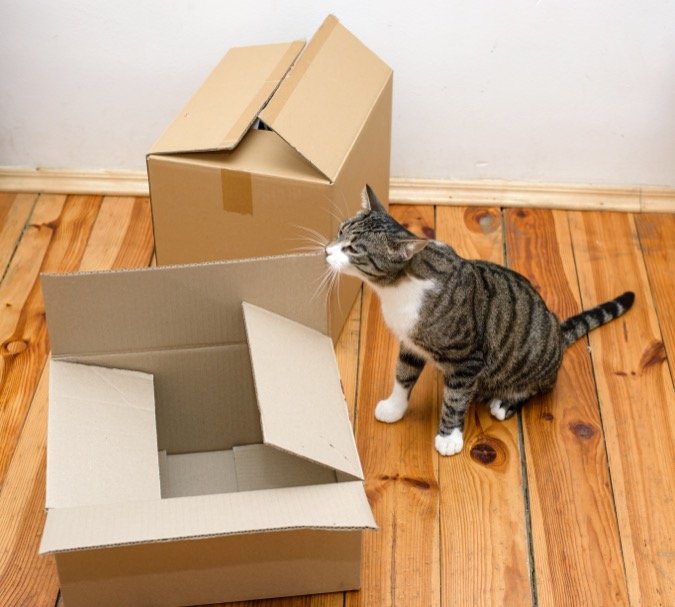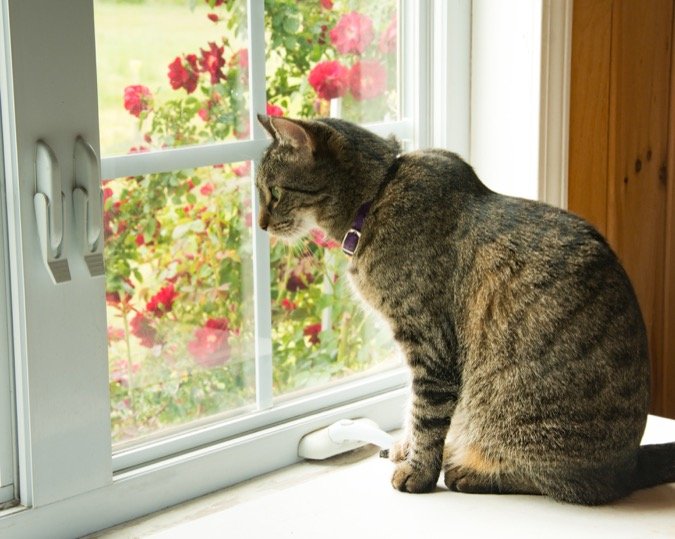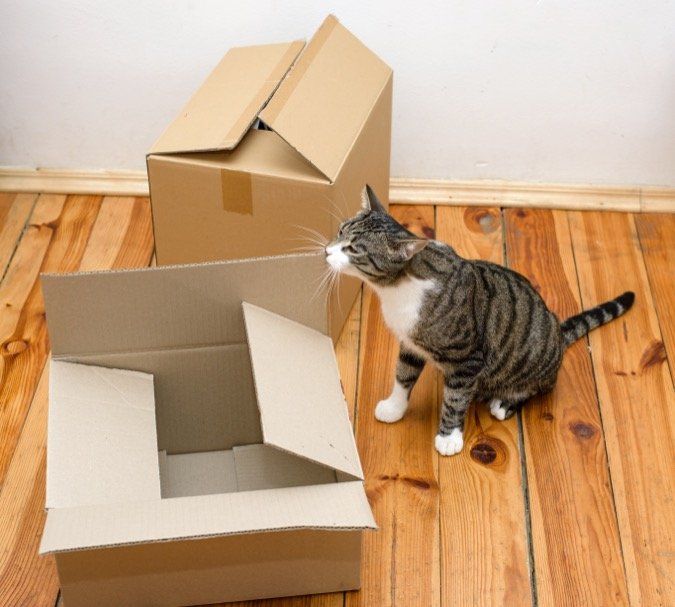Much in the same way that stress affects humans, it can also affect cats. While brief periods of stress can help cats to survive dangerous situations, recurrent or prolonged stress can be harmful for them both physically and emotionally.
Cats are creatures of habit; they depend on regular routines more than any other any animal. Cats can get stressed with any slight change in routines. Sudden changes in the environment, family makeup or even an owner going back to work can cause even the easiest-going cat to become “unglued.”
What repeated stress can create
© Vitaliy Hrabar | Dreamstime

When a cat feels cornered or threatened, cortisol is released into her system. Cortisol is a hormonal steroid produced by the adrenal glands. Cortisol assists the cat’s body respond to stress. It regulates several body processes, including the immune and the metabolism response. Adrenaline is also released during sudden stress, causing the heart rate to escalate and preparing the cat for a flight or fight response. Although fleeting bursts of stress can actually save the cat’s life, continual stress can cause deleterious effects.
Upper respiratory infections and other serious medical conditions can be traced to chronic feline stress. Stress can be responsible for a multitude of behavioral issues such as aggressive behavior toward other animals and people, depression, over grooming or not grooming, obsessive-compulsive behavior and flat-out withdrawal. Stressed cats may lose their appetite, or chew on or consume non-food items such as wool or plastic (this is known as pica). Stress can cause insecurity and engender litter box avoidance and territorial urine marking behavior.
Because cats are masterful at hiding anxiety, signs of feline stress may often be overlooked. Conversely, some signs of feline anxiety are clearly observable and warrant prompt veterinary intervention.
Signs and causes
Inappropriate elimination: It is obviously very frustrating when a cat stops using the litter box. Stress can often bring about inappropriate elimination and/ or spraying. Common stressors are dirty litter boxes, litter that is unacceptable, medical problems, alterations in the interactions among other household cats, diversions in household routines, spying roaming neighborhood cats or other animals through the window or moving to a new house.
Hiding: Stressed cats often seek hiding places under a bed, in dark closets or disappear onto high and remote places around the house. Their goal is to distance themselves from whatever is causing their anxiety. Environmental stressors can include excess confinement, abrupt changes in daily routine, moving to a new house, a new baby, too many animals in the home or an owner going to work.
Physical stressors include illness, trauma, obesity, parasites and fleas and surgical procedures. Emotional stressors may include the death of a closely bonded caretaker or family pet, jealousy/rivalry and boredom.
Velcro cats: Stressed cats may start being clingy, sticking to their caretaker like glue, following them around the house begging for attention. They may wander aimlessly around the house howling and crying when they are separated from their favorite person for even a few minutes.
Changes in the cat’s vocalization: It can be troublesome when a normally chatty cat abruptly stops communicating and is withdrawn, or conversely when a cat that is usually quiet begins constantly howling or vocalizing. These changes in a cat’s normal means of communication can be a sign of feline stress caused by an underlying medical condition such as cognitive dysfunction or thyroid disease. High blood pressure may also cause incessant howling.
Overgrooming/under grooming: Chronic stress or a series of stressful events can cause cats to overgroom. Cats groom for a variety of reasons. Because licking releases endorphins, this behavior is comforting and self-soothing. But when cats are chronically stressed, they will often seek solace by compulsively overgrooming. Oriental cats appear to be more genetically predisposed to this condition. On the other hand, cats that are stressed may completely stop grooming.
Pica (eating non-food items): Although the cause of pica remains a mystery, cats that are chronically stressed may start chewing and consuming non- food items to self-soothe. They may suck on wool, eat plastic, and chew on rubber, wood and other inedible items. This behavior is extremely dangerous because it can cause an intestinal obstruction, choking or GI upsets. Pica behavior may be caused by lack of attention, boredom or separation anxiety.
Agitation: Stressed cats can frighten easily and get jittery and anxious at insignificant movements or sounds. While a traumatic event may have provoked these reactions, some cats may continue to react fearfully to even less extreme events.
What you can do
© Pimmimemom | Dreamstime

To learn about solutions that may prevent or better manage feline stress, we reached out to Stephanie Borns-Weil, DVM, Director of the Animal Behavior Clinic at Tufts University Cummings School of Veterinary Medicine.
According to Dr. Borns-Weil, the first step to solving feline stress is to figure out what’s causing it. There are easy methods that cat owners can use to minimize stress in many situations. For example, a move to a new residence can be stressful.
“The actual move is not so bad if the owner takes proactive steps to help prevent it,” says Dr. Borns-Weil. “Be certain that your cat is comfortable in the carrier. If your cat is carrier-shy, leave the carrier open with treats in it. Get your cat accustomed to being in the carrier for short periods until she accepts it more easily.”
To make the actual move less stressful for your cats, Dr. Borns-Weil suggests that if you are moving within the same geographical area, you bring your cat’s favorite things to the new location, such as scratching posts, cat trees, his or her beds and a few toys. If it is a more distant move, send these things ahead so they are ready to be set up in the new residence as soon as your cat arrives. Your cat will recognize these familiar objects, which is comforting and reassuring. Protect your cat as much as possible from the movers. Always check for safety issues such as wiring and cabinets in which a cat could get trapped. Taking these precautions will help to lessen stress and dangers, too.
Dr. Borns-Weil also recommends that in the case of moving with multiple cats, due to the unfamiliar scent of the new residence, aggressive behavior may erupt. To help prevent inter-cat aggression, put the cats in different rooms and create a comfy place for them to retreat. Place a scratching post or cat tree in their rooms along with a familiar litter box, water bowl and toys. In rare instances, you may have to repeat slow reintroductions again, especially if there have been issues among them in the past.
In the event of a new baby, Borns-Weil emphasizes the importance of safely including the cat when the baby is near. “Don’t wait to give your cat attention only when the baby is asleep. Be attentive to your cat and pet her when the baby is around and awake.” According to Dr. Borns-Weil, “The cat may come to develop negative associations with baby if she is ignored whenever the baby is awake and lavished with affection when the baby is asleep.” Protect the cat and avoid negative interactions when the inevitable crowd of visitors arrives. Keep routines the same as much as possible and do make time to play with the cat every day.
Help for separation anxiety
Clingy, insecure cats may suffer from separation anxiety when the owner leaves for the day. Dr. Borns-Weil suggests helping to minimize this upset by “giving the cat something to do.” To ignite her hunting instinct, leave several bowls of food in different areas around the house. Optimize her environment with “kitty TV,” such as a bird feeder by the window or a fish tank with a tight lid. Fish tanks can amuse many cats for hours on end. A comfy bed by a window with a view is also quite appealing.
Although stress can bring on inappropriate elimination, a vet visit is in order to rule out any underlying medical condition before assuming it is a behavioral issue. Once the cat receives a clean bill of health, it’s important to do some detective work to find out what is causing this behavior. It could be as simple as a dirty litter box or litter, which the cat does not like — and this has an easy solution.
Perhaps the cat lounging in her favorite windowsill spied a strange cat roaming the yard, and suddenly felt territorially challenged and began spraying around the area. To help rectify this situation, there are mechanical deterrents to place around the windows so that roaming cats quickly learn that the area is not a good place to hang out. An excellent deterrent is SssCatspray. This is a motion detector that activates when a cat walks by. It makes a loud hissing noise and sprays harmless air and can be very effective.
February into September are the primary feline breeding seasons. This is when cats tend to roam more frequently. To help prevent territorial angst, you should try to keep blinds and curtains closed during these periods. If these measures do not work, check with your vet who can prescribe anti-anxiety medications that can help manage behavior.
Since cats are intelligent and curious creatures, Dr. Borns-Weil suggests that to prevent and/or alleviate feline stress, you should try to make your cat’s world bigger. Collar and leash training is a wonderful way to enjoy taking your cat outdoors for a walk. Using a cat stroller is also an excellent way to give your cat a breath of fresh air. Just be sure to try out these new strategies inside your home before venturing outside. Even then, stay close to home and have a plan in case your cat panics.
By keeping your cat’s brain stimulated with interactive play toys, a scenic window view and lots of loving attention, you can help cement your bonds and also stave off boredom — which can lead to emotional and physical stress.




